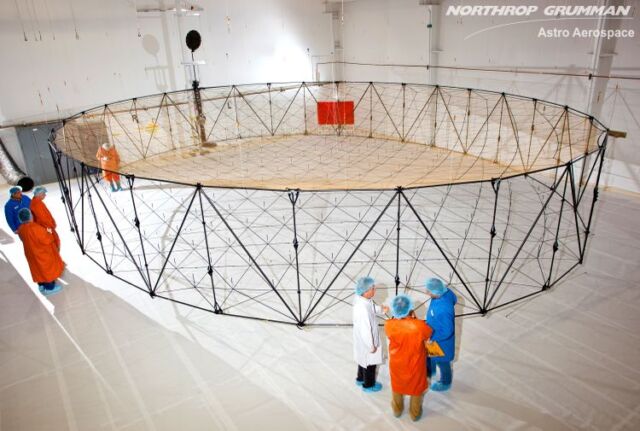Viasat’s new communications satellite that was launched in April has been stalled by a problem uncovering its main mesh antenna. The problem threatens Viasat’s revival of its Internet network that would allow it to compete with new offerings from companies such as SpaceX and OneWeb.
Viasat confirmed the antenna problem late Wednesday it was first reported by Space Intel Report. The satellite in question is called ViaSat-3 Americas, and it was launched on April 30 as a payload on a SpaceX Falcon Heavy rocket from NASA’s Kennedy Space Center in Florida.
The satellite is one of the most powerful commercial aircraft ever built, with two solar powered wings as large as a Boeing 767 that can generate more than 30 kilowatts of electricity. The solar panels were installed as soon as the plane arrived in orbit, and the next step was to produce a large reflector to direct Internet signals between the ground and the transmitters and receivers in the main satellite array.
That’s when the authorities on the ground faced problems. An “unforeseen event” occurred during the launch of the detector that “may affect” the satellite’s operations, Viasat said.
“We are disappointed by the latest developments,” Mark Dankberg, chairman and CEO of Viasat, said. “We are working with the display manufacturer to try to resolve the issue.”
The ViaSat-3 Americas spacecraft is still in contact with ground controllers as they try to resolve the issue. An industry expert, speaking on condition of anonymity, told Ars that there is little chance that ground crews will be able to repair the satellite antenna and restore service.
If Viasat declares a loss, the ViaSat-3 Americas satellite is insured for $420 million. This would be the largest insurance claim for the loss of a satellite. But a person familiar with the aviation insurance market said the $420 million would not cover the full cost of the project. The San Diego Union-Tribune has reported on the ViaSat-3 Americas project cost about $700 millionleaving Viasat on the hook for the difference.
An aviation insurance executive told Ars that this could “disrupt” the industry and could drive some bookmakers out of the market.

The mesh-like antenna on the ViaSat-3 Americas satellite is made of reinforced polymers, graphite, and carbon dioxide, with fine gold-plated wire woven into the structure to increase flexibility and reduce weight. During the launch, the antenna was bent vertically towards the spacecraft to fit inside the rocket’s payload fairing.
The spacecraft was built by Boeing, with communications payloads developed internally by Viasat. The display was provided by Northrop Grumman’s Astro Aerospace, said Dave Ryan, Viasat’s president of space and commercial sales, in an interview before the launch in April.
Ryan said the deployment of the antenna should take “literally days.” The detector is attached to a boom 80 to 90 feet (about 25 meters), from the center of the tower that helped send the shadow of the sun on the James Webb Space Telescope. Speaking before the launch, Viasat officials did not elaborate on the specifics of the rotating antenna but said it was one of the largest of its kind ever unveiled in space.
The receiver is supposed to focus the signal from the satellite to a small area on the ground. It is necessary for the satellite to reach thousands of users at once, and output more than a terabit per second over its 15-year lifetime.